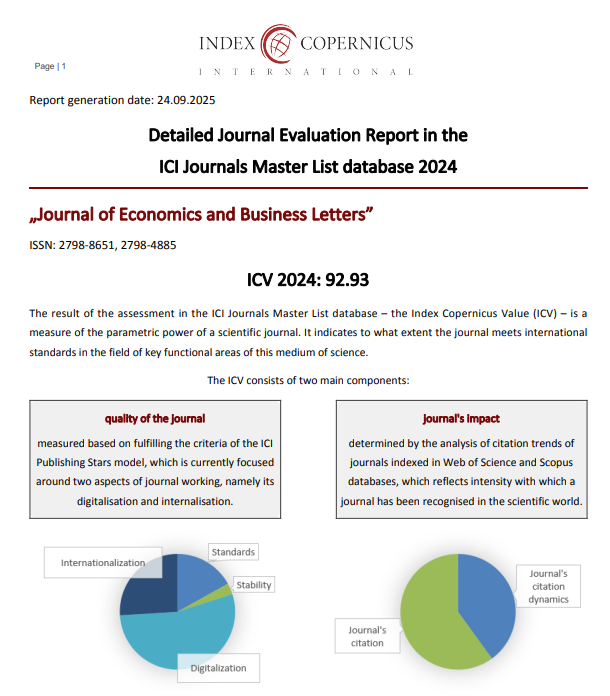Leadership and organizational culture as dual levers of work wthic in local government: Evidence of indirect – only and complementary mediation via job satisfaction at Kecamatan Pasar Rebo, Jakarta
DOI:
https://doi.org/10.55942/jebl.v5i1.883Keywords:
leadership, organizational culture, job satisfaction, work ethic, public administrationAbstract
This study examines how leadership and organizational culture shape civil servants’ work ethic in a Jakarta sub-district office, with job satisfaction specified as a mediating mechanism. Using a cross-sectional survey and hypothesis-testing design, we validated multi-item measures for leadership (supportive, directive, participative, achievement-oriented behaviors), organizational culture (shared values and routines), job satisfaction (pay/benefits, supervision, work content, opportunities), and work ethic (punctuality, diligence, adaptability). Measurement screening indicated satisfactory reliability and item validity. Regression/SEM results show that leadership and organizational culture both positively predict job satisfaction (R² ≈ .43). In the work-ethic model, organizational culture and job satisfaction exhibit positive, significant effects, while the direct leadership effect is non-significant; model fit explains a meaningful share of variance in work ethic (R² ≈ .20). Indirect-effect computations indicate an “indirect-only” mediation for leadership (leadership → satisfaction → work ethic) and “complementary” mediation for culture (direct + indirect paths in the same direction). Substantively, leader behaviors elevate employees’ felt fairness, clarity, and recognition, which translate into ethical diligence, whereas culture both institutionalizes normative expectations that directly pull behavior and simultaneously raises satisfaction. The findings support a dual-track improvement strategy: invest in participative, feedback-rich leadership to lift satisfaction, and codify culture norms (learning from mistakes, fair rewards, teamwork, punctuality) to directly and indirectly strengthen work ethic. Implications include embedding feedback cycles, clarifying performance standards, and aligning recognition/promotion systems with targeted ethical behaviors.
References
Boyne, G. A. (2002). Public and private management: What’s the difference? *Journal of Management Studies, 39*(1), 97–122. https://doi.org/10.1111/1467-6486.00284
Brewer, G. A., & Selden, S. C. (2000). Why elephants gallop: Assessing and predicting organizational performance in federal agencies. *Journal of Public Administration Research and Theory, 10*(4), 685–711. https://doi.org/10.1093/oxfordjournals.jpart.a024287
Hartnell, C. A., Ou, A. Y., & Kinicki, A. (2011). Organizational culture and organizational effectiveness: A meta-analytic investigation. *Journal of Applied Psychology, 96*(4), 677–694. https://doi.org/10.1037/a0021987
Judge, T. A., Thoresen, C. J., Bono, J. E., & Patton, G. (2001). The job satisfaction–job performance relationship: A qualitative and quantitative review. *Psychological Bulletin, 127*(3), 376–407. https://doi.org/10.1037/0033-2909.127.3.376
Judge, T. A., & Piccolo, R. F. (2004). Transformational and transactional leadership: A meta-analytic test of their relative validity. *Journal of Applied Psychology, 89*(5), 755–768. https://doi.org/10.1037/0021-9010.89.5.755
Kline, R. B. (2016). *Principles and practice of structural equation modeling* (4th ed.). New York, NY: Guilford Press.
Luthans, F. (2011). *Organizational behavior* (12th ed.). New York, NY: McGraw-Hill.
Ostroff, C., Kinicki, A. J., & Tamkins, M. M. (2003). Organizational culture and climate. In W. C. Borman, D. R. Ilgen, & R. J. Klimoski (Eds.), *Handbook of Psychology: Industrial and Organizational Psychology* (Vol. 12, pp. 565–593). Hoboken, NJ: Wiley.
Podsakoff, P. M., MacKenzie, S. B., & Bommer, W. H. (1996). Transformational leader behaviors and substitutes for leadership as determinants of employee satisfaction, commitment, trust, and organizational citizenship behaviors. *Journal of Management, 22*(2), 259–298. https://doi.org/10.1177/014920639602200204
Podsakoff, P. M., MacKenzie, S. B., Lee, J.‑Y., & Podsakoff, N. P. (2003). Common method biases in behavioral research: A critical review of the literature and recommended remedies. *Journal of Applied Psychology, 88*(5), 879–903. https://doi.org/10.1037/0021-9010.88.5.879
Preacher, K. J., & Hayes, A. F. (2008). Asymptotic and resampling strategies for assessing and comparing indirect effects in multiple mediator models. *Behavior Research Methods, 40*(3), 879–891. https://doi.org/10.3758/BRM.40.3.879
Treviño, L. K., Weaver, G. R., & Reynolds, S. J. (2006). Behavioral ethics in organizations: A review. *Journal of Management, 32*(6), 951–990. https://doi.org/10.1177/0149206306294258
Wright, B. E., & Pandey, S. K. (2010). Transformational leadership in the public sector: Does structure matter? *Journal of Public Administration Research and Theory, 20*(1), 75–89. https://doi.org/10.1093/jopart/mup003
Zhao, X., Lynch, J. G., Jr., & Chen, Q. (2010). Reconsidering Baron and Kenny: Myths and truths about mediation analysis. *Journal of Consumer Research, 37*(2), 197–206. https://doi.org/10.1086/651257
Downloads
Published
How to Cite
Issue
Section
License
Copyright (c) 2025 Lidiana Endah Viefrien Rahayu

This work is licensed under a Creative Commons Attribution 4.0 International License.
















